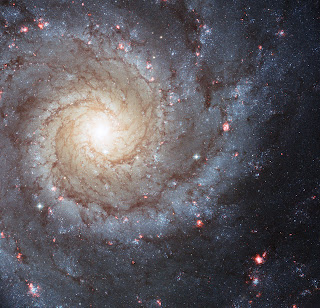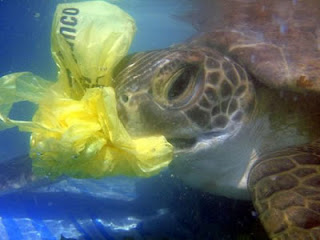 |
| Known Universe Segment, With Helium |
Turns out we have a giant underground Helium Reserve in Texas. I wouldn’t have thought we needed one, since I hear helium is the second-most abundant element in the known universe. It also seems unnecessary to use the term “known universe” in a sentence. You don’t make statements like “there are barely a hundred Northern hairy-nosed wombats left in the world, as far as we know, although we’re not ruling out that there are other worlds out there made entirely out of Northern hairy-nosed wombats.” That second bit just doesn’t need to be said. Just talk about the stuff you know.
Particle physicists, though, talk like that all the time. They like to distinguish between the “known universe” and all the other ones we don’t know, but have suspicions about. “There might be a universe tucked right alongside of this one like the little tissue paper inside a wedding invitation,” one particle physicist will say, “but we don’t know how to prove it.”
“Unless we can find snorbits,” the other particle physicist says. “Or evidence of snorbits.”
 |
| Possible Snorbit |
“Snorbits would totally prove the existence of the tissue-paper universe,” agrees the first, and everyone does a bunch of math, and then they all go off to develop giant underground particle accelerators meant to discover the frumigated, sidelong, or common yellow snorbit, or its poop. Then they go to parties with other particle physicists, because no one else ever invites them.
But let’s just leave them be, and go back to helium being the second most-abundant element in the universe, which we’re going to go ahead and call The Universe. Why would we need a repository? Well, it turns out that most of the universe is a really long drive from here. And here, we don’t have all that much helium. So we have a repository in Texas. Great place for one. In Texas, where the official position is that global warming is a hoax, they’ve had a horrible long drought and have had to drill deeper and deeper for antique groundwater, and the rock layers they’re pulling the water out of are beginning to collapse. Judiciously placed helium caves could well keep things propped up on the surface so that everybody’s bowling balls still roll regular.
The Helium Reserve was set up in 1949, and until the Helium Stewardship Act was passed recently, it was set to shut down soon, but now they’re allowed to sell helium beyond 2015. This, says the bill’s sponsor, will prevent disruption of the helium supply, and if it were shut down, it would distort the helium market, possibly giving it mouse ears. I’m not sure how running through our reserves of a limited resource is going to stabilize anything, but that seems to be the way we officially roll.
Like many of you, I assumed we could recycle our helium just by retrieving all the balloons that are bumping along the crusty layer of satellite shrapnel and other space debris on our planet ceiling, but we can’t, because it’s too far away and they aren’t actually there. The helium has floated off into the known universe where they don’t really need any more, and the balloons have fallen back to earth where they are eagerly ingested by sea birds and turtles, who mistake them for jellyfish, at their peril. Party balloons are pretty much the least important use for helium, after things like MRIs and snorbit research. Maybe, given that helium prices are going nowhere but up, we could all learn to settle for unambitious balloonery, instead of squandering our helium on remote turtle murder devices. ‘Kay?
Much obliged to reader Kendra Nissley for alerting me to the helium shortage.


I live close to Amarillo and The Helium. Perhaps this eXplains why my voice is slightly higher pitched? Perhaps we need to devote more money to teaching sea turtles how to recycle (eat) plastic. The party tickle fizzy-cists wiLL also teLL you that our helium comes as a disintegration product of radioactive decay. The alpha particle is the nucleus of a helium atom. I think it is cool that helium was discovered on the sun before it was discovered on earth, by fizzy-cists, of course.
Poor physicists. I always hated working on those really hot days.
?
Sounds to me like the whole thing is building up to what we all pretty much suspected in the first place. Some sunny day, Texas will emit a giant fart and we will all be blown away.
This seems awfully plausible. Well, we gotta go sometime.
You should have majored in Science!!! You would be a great researcher and I just know you would let me ride in one of your balloons.
I DID major in science! Can't you tell?
I've had a delightful dinner, during which several bottles of various beverages were emptied and I'm now waaaay beyond the munirations of fizzy cysts.
But it does seem to me that Texas is a darn' good place for helium since Texans are fond of inflations…
Inflations, conflations, and downright fabrications, some of 'em.
And to think we've wasted all that helium on balloons and silly talking. 😉
I never did it. I was too skeert.
Oh, man, I hate when that happens! I saw a frumigated yellow snorbit pooping just the other day, and I didn't have my camera handy. Now I won't get invited to the cool physicists' parties.
I'm still laughing. You made my day with the snorbits!
Oh, honey! Neither one of us would have been invited to the parties anyway. You have to wear a tie, and I could never get my boson straight.
I can't decide if that was completely unacceptable, or sheer genius.
No reason it can't be both.
*snork*!
I'm married to one of them thar physicists and I assure you they do not wear ties to parties. They don't even wear them to work. Maybe weddings, funerals and the occasional Nobel Prize reception, but that's about it.
I think I still have a whole box of my grandmother's snorbits in the basement somewhere, unless we used them all for target practice. I'll go look for them, while I'm thinking about how thoseTexans are so ladeedah that they have to reserve their helium.
I cherish you.
What an enlightening post. I had no idea about this shortage. But I did know there was an abundance of gas in Texas.
Right under Rick Perry's hair.
Sounds like a golden opportunity to buy helium futures. Won't do much for the kids birthday parties though.
Didn't we eat snorbits and ice cream when we were kids in the 50s?
Were we kids in the fifties? Oh yeah, we were. Thing about snorbits, they're not very filling.
Holy snorbits, Murr! I had no idea.
Well, but that's why you're HERE.
Too bad there isn't a market for hot air rather than helium; we'd never run out seeing as it's more than replenished every few years.
That possible snorbit might be a snarbil instead, they are easily confused. You can tell by the colour of its toes.
A whole different universe! My!
I never laugh before 10 a.m. Until this morning. What a strange feeling!
What? Is that like a policy? We'll see about that.
I don't think it's any accident that Helium Reserve is an anagram of both Here Vile Serum and Serve He Muriel. But, I must away….there's a sale on tinfoil at Safeway and I must reline my hat.
Um, relive sheer.
It could be because I am at a much higher altitude than I am accustomed to or it could be that I spent too much time staring out Georgia O'keeffe's bedroom window yesterday, but Murr, this post makes no sense whatsoever.
It's the altitude. I ALWAYS make sense, on the inside.
I am fully committed to unambitious balloonery.
Atta girl!
Okay Murr, have you been sucking up the helium so you can run around speaking in a high whiny voice??? Hmmmm….
Oh, no, that scares me. I always thought it wouldn't snap back.
All the screwballs down in Takes-US need is to learn that a garbage bag full of helium is one of the preferred methods of assisted suicide, and they'll never release any more of the stuff. Folks will have to go down there and get shot by gun totin' cittyzens.
Parenthetically, it was always my impression that when fizzy cysts and cosmo-ologists spoke of the "known universe," they were referring to the known parts of our own little wrinkle in time, as opposed to the 90% that they apparently mislaid at some point. But I was wrong before. Some time back. I think. Could be wrong about that.
No, I thought of that and I think you're right, but I'd already gone off on a riff and wasn't about to be put off by excessive precision.
Hey Murr! I'd best not comment on the physics, as I know someone in snorbit research, and they can get militant if mocked. I think we're just a few jellons shy of a quantum jihad, in fact. Roth x
Thanks for the warning. I can be dangerously gullible, and walk right up to the edge of a snorbageddon without a care in the world. I need supervision.
Please write a Science Fiction Fantasy or was this it?
Go girl!
This was no more fantasy than anything else I scribble out. I'll leave it at that.
Oh, No!!! I predict the helium crisis will put car dealerships out of business. They'll have to start tying feral cats to the antennae for advertising.
I'll endorse that, as a bird-lover. Long may they flap.
Dang, I will never be able to look at a party balloon the same way again.
I know. I hate education.
Snorbits are every bit as believable as quarks. Physics vocab is the best. But I'm sorry to hear about this thing with helium. We'll miss it when it's gone. Along with the ice caps, glaciers, and all coastal cities.
Maybe we'll be gone too, and we won't miss a thing.
Well some of us may be gone sooner than later. Still we all have to go. Wonder if we'll be converted to a gas and when?
Don't make me say the obvious!
Entirely in favour of alternate universes. Filled with helium balloons and snorbits. and Texas.
And Texas.
jaket kulit asli
jaket kulit asli
jaket kulit asli
jaket kulit asli
jaket kulit asli
jaket kulit asli
jaket kulit asli
jaket kulit asli
jaket kulit asli
jaket kulit asli
jaket kulit asli
jaket kulit asli
jaket kulit asli
jaket kulit asli
jaket kulit asli
jaket kulit asli
jaket kulit asli
jaket kulit asli
jaket kulit asli
jaket kulit asli
jaket kulit asli
jaket kulit asli
jaket kulit asli
jaket kulit asli
jaket kulit asli
jaket kulit asli
jaket kulit asli
jaket kulit asli
jaket kulit asli
jaket kulit asli
jaket kulit asli
jaket kulit asli
jaket kulit asli
jaket kulit asli
jaket kulit asli
jaket kulit asli
jaket kulit asli
jaket kulit asli
jaket kulit asli
jaket kulit asli
jaket kulit asli
jaket kulit asli
jaket kulit asli
jaket kulit asli